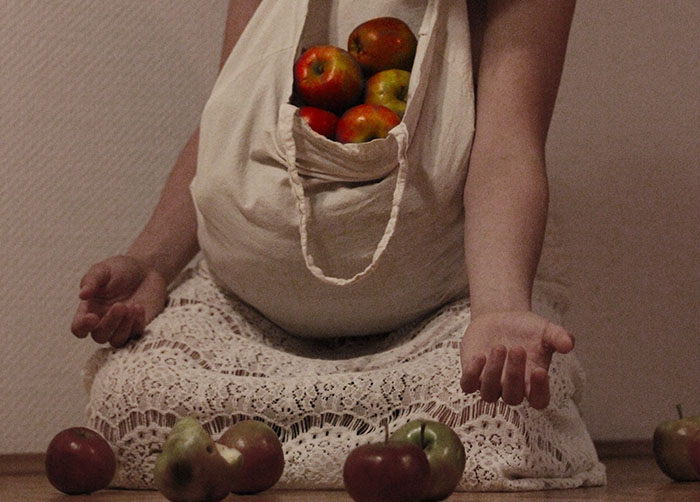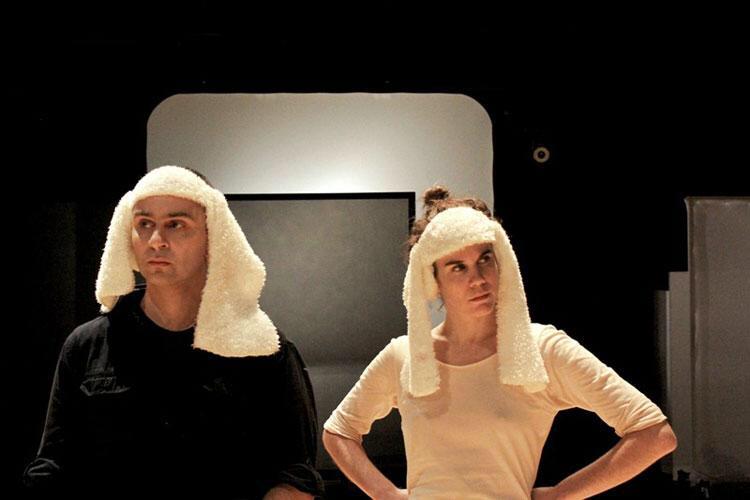Dance Matters-- Series 3-- Rebel Yells

Dance Matters-- Series 3-- Rebel Yells
Artistic Director: Tanya Crowder
Pia Bouman School, Scotiabank Theatre, Toronto
February 20-21 2016
REVIEWED BY BEVERLEY DAURIO
This year, Dance Matters performance series celebrates its tenth anniversary. Curated and run by artistic director Tanya Crowder, the series provides a welcoming space for the showing of excerpts and short new pieces. Each edition of the show allows four to six choreographers to reach an enthusiastic audience with their work, and since the demise of Series 8:08, the monthly works-in-progress anthology, the exposure and community exchange Crowder facilitates has become even more valuable and important. In a large city where the production of new groundbreaking work from other jurisdictions is rare, Dance Matters is fostering exchange, supporting Toronto artists, taking chances, and bringing in choreographers from places like Montreal and New York City.

Sunday afternoon's program started with "Nothing III," a short piece from Tel Aviv, Israel choreographers Noa Zuk and Ohad Fishof. A dense and playful piece, "Nothing III" showcases the physicality and expressiveness of dancer Sahara Morimoto (recently a feature performer in Peggy Baker's Phase Space). Morimoto is dressed in red briefs, a long-sleeved T-shirt, and bright yellow gloves. A male voice intones: "My sculpture is heavy and lonely..." and goes on to explain that his statue wanted to run away, but is still in the same place. Morimoto starts and stops in animé poses, with precision, elegance and comedic energy. The score, composed by Ohad Fishof, ranges from sproingy cartoon music to a spoken karaoke section where Morimoto repeats the "My sculpture" speech, to camera clicks and soft piano, accompanying and lifting the choreography. Sharp, clear and thought-provoking.
The second piece, "In Two Days a Man Can Change," choreographed by Lesandra Dodson based on a cowboy motif, features performers Darryl Tracy and Ric Brown, and uses excerpts from "The Complete Western Stories of Elmore Leonard," as well as original text by Tracy and Brown. Two men appear to be in the middle of an expedition into the southwestern desert-- large visuals of mesas and cacti, hot sun and distant brown hills are projected against the back wall. The desert works well as a metaphor for a moral wasteland. The two men wear identical costumes: black button-up long-sleeved shirts and black pants-- and are engaged in an almost mythical conflict in the form of physical competitions and arguments. They play out good and bad, the evil twin, reflections of each other, a bully and a victim. It is interesting to see western themes interpreted in dance theatre.
The third piece, "uncovered woman," is choreographed and performed by Julia B. Laperrière of Montréal. A very stark human shape kneels on stage in a circle of light. Slowly the dancer stands, her face and body entirely draped in fabric that is lit to look like stone, and for a few moments she stands facing us, her face blacked out and ominous, while golden light pours around her. As the light comes up, her appearance shifts from frightening to madonna-like, and we can see that the fabric covering her is white and lacy, as if she were a kind of anonymous bride. With her face still covered, she proceeds to kneel and scrub the floor with her now bundled veil. As Ave Maria and a Handel chorus play, she makes several hand signals, from peace signs to shaking fists. After dropping a bag of red delicious apples onto the stage, she does a handstand, slowly allowing her dress to fall away from her body, and keeping her face concealed. The piece is political visually, arresting, and innovative in its created tensions.

After the intermission, for Floaters #1, the audience was asked to sit within a prescribed space on the stage floor. Most of the audience complied. The lights went down and stayed down for the first third of the piece. New York City choreographer and performer Christine Bonansea has created a kind of experience flood. Using minimal light, the running presence of the dancer, and her magnified and multiplied footsteps, she circles the audience, surrounding them with a wash of sound whose volume varies from quiet to ear piercing. For the remainder of this piece, the dancer interacts with her own shadows and multiplied silhouettes, in the light at the front of the stage, as both a bright dancing shape on the screen, and as physically present to us. This piece creates a disorienting sense of how memory is created how it works.
"I shaved my legs six times and no sex happened" was choreographed by Philippe Dandonneau in collaboration with performers Claudia Chan Tak and Sebastien Provencher. A no-holds-barred comedic satire, the piece plays out like a kind of cultural wrestling match where men's bodies are treated in much the same way that pornography treats women. Each of the four rounds of the "match" begins with Tak, acting as the cliched female fight card carrier, with a sly sarcastic twist both to her sexist costuming and the nature of the competition. Behind her, a large blue plastic tarp has been taped to the floor, while stage left the two male performers sit on folding metal chairs, facing each other and holding each other's chins. In each round the men compete against a background of pop music including Beyoncé and Dolly Parton. Much of this is quite funny and much of it is blatantly sexual, as the partially dressed men don lace panties, smear themselves in oil and wrestle, roll about the stage naked, exposing their jiggly bits, or are shaved or play the ukelele. The whimsical ending of this piece was quite delightful, and both softened and complicated its message.

